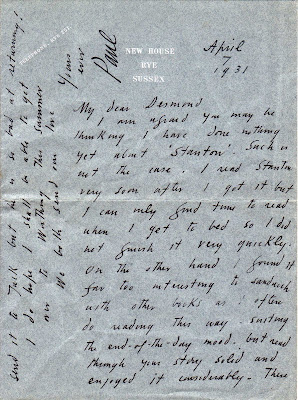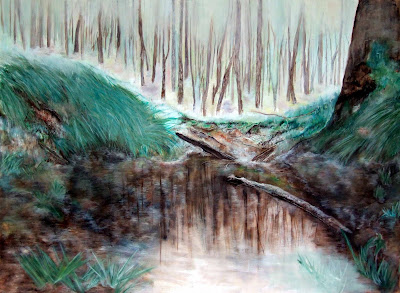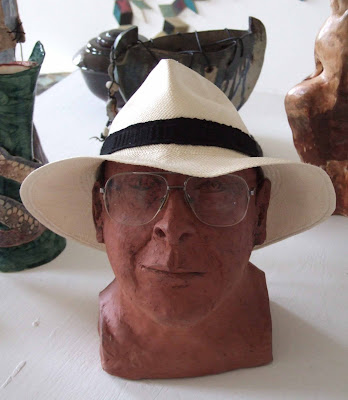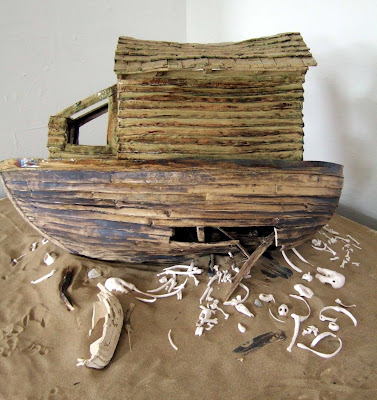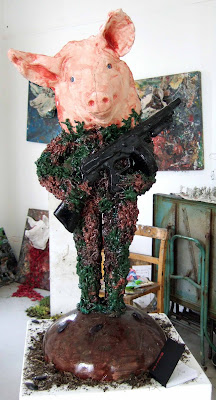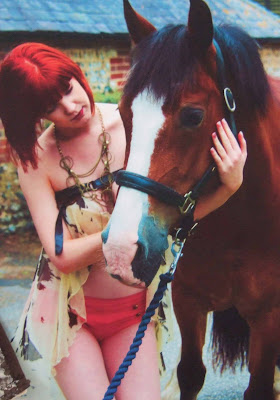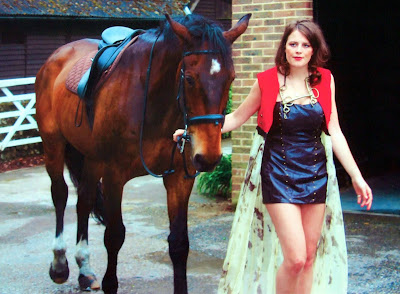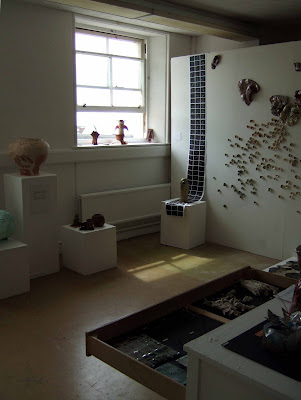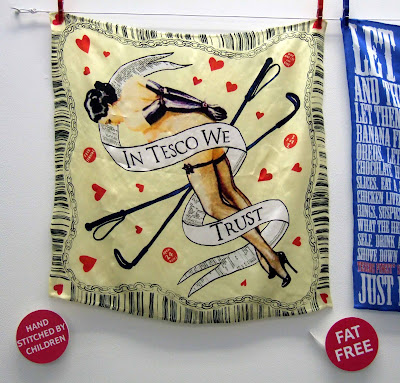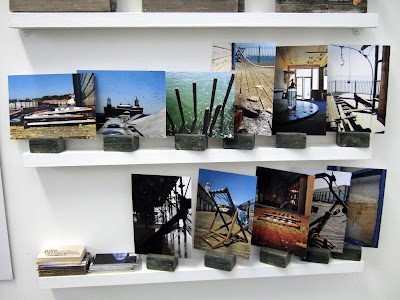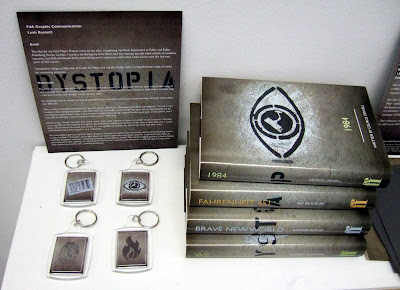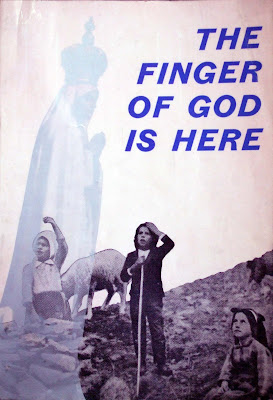 I've heard of the Hand of God, but what is this all about? Is it a more casual form of divine intervention, for less important cases? Either way, it's a wonderful jacket.
I've heard of the Hand of God, but what is this all about? Is it a more casual form of divine intervention, for less important cases? Either way, it's a wonderful jacket.The addition of Ireland to our supply chain is a real bonus, as the quality of the books is generally high, but it does make it harder to trace the origin of some of the obscure items that are hidden between the pages. For example, is this badly-composed photo from Britain or Ireland?
 It definitely isn't Sussex, but I'm pretty sure this is:
It definitely isn't Sussex, but I'm pretty sure this is: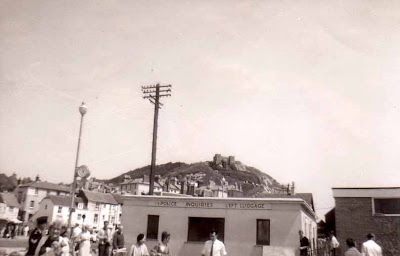 I'm almost certain that it's Hastings. I found it in an album of photos that were so dull, even the owner gave up after seven pages. This picture is one of a pair and shows how important the resort was as a tourist destination, with bustling coach parks and crowds of tourists. In this picture you can see a building with a sign saying "POLICE. INQUIRIES. LEFT LUGGAGE", so it was clearly a busy place.
I'm almost certain that it's Hastings. I found it in an album of photos that were so dull, even the owner gave up after seven pages. This picture is one of a pair and shows how important the resort was as a tourist destination, with bustling coach parks and crowds of tourists. In this picture you can see a building with a sign saying "POLICE. INQUIRIES. LEFT LUGGAGE", so it was clearly a busy place.Here is another, more exotic form of travel:
 This is a quintessentially 1950s Dan Dare Britain, still hanging on to its status as an imperial, maritime power; now conquering the stars with an army of grammar school children, probably called Colin and Jean.
This is a quintessentially 1950s Dan Dare Britain, still hanging on to its status as an imperial, maritime power; now conquering the stars with an army of grammar school children, probably called Colin and Jean.Perhaps "Return to the Lost Planet" was bought with this:
 This Book Token card was designed by Rowland Hilder and comes with its own detachable bookplate, which has a smaller version of the cover. I know that these sorts of pastoral images can seem a bit naff, but there's something very appealing about this one.
This Book Token card was designed by Rowland Hilder and comes with its own detachable bookplate, which has a smaller version of the cover. I know that these sorts of pastoral images can seem a bit naff, but there's something very appealing about this one.Here is a frontispiece from the Edwardian era:
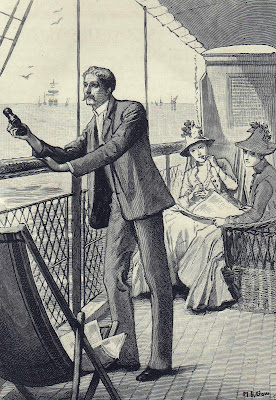
 In an age when a lot of us are getting our knickers in a twist about the burqa, it's easy to forget that we also used to have some fairly conservative ideas about dress. A century ago, the removal of one's hat could cause both outrage and, sometimes, a sexual frisson. The lady on the left looks as if it's all too much for her.
In an age when a lot of us are getting our knickers in a twist about the burqa, it's easy to forget that we also used to have some fairly conservative ideas about dress. A century ago, the removal of one's hat could cause both outrage and, sometimes, a sexual frisson. The lady on the left looks as if it's all too much for her.Things were quite different 30 years later, on the eve of the Second World War:
 Admitedly, this is unusually saucy for its time, but the mere fact that it was published shows how much the social mores had changed.
Admitedly, this is unusually saucy for its time, but the mere fact that it was published shows how much the social mores had changed.Fast-forward another 30 years and you find covers like this:
 I can't begin to imagine what it must have been like for someone who grew up in the age of hats and smelling salts to see covers like this. Sodom and Gomorah! I suppose it didn't happen overnight, but I'm sure that my Great Aunt Nancy must have thought that the world was coming to an end.
I can't begin to imagine what it must have been like for someone who grew up in the age of hats and smelling salts to see covers like this. Sodom and Gomorah! I suppose it didn't happen overnight, but I'm sure that my Great Aunt Nancy must have thought that the world was coming to an end.But while some people were losing their inhibitions, others were improving their diction:
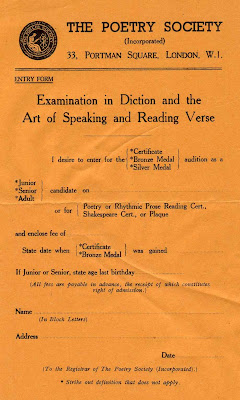 I wonder what the criteria were. Presumably, in addition to not speaking as if you had a bun in your mouth, anything too "common" or regional was out. But were points added or taken away for speaking like Noel Coward? I'd love to know.
I wonder what the criteria were. Presumably, in addition to not speaking as if you had a bun in your mouth, anything too "common" or regional was out. But were points added or taken away for speaking like Noel Coward? I'd love to know.Finally, something I found two hours ago:
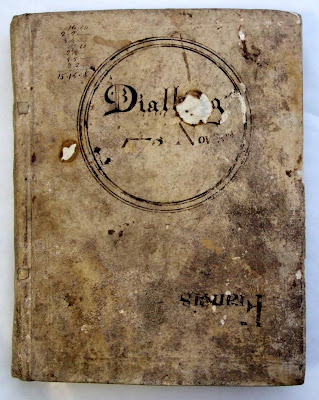 It is an 18th century exercise book, with beautifully-written notes and drawings on trigonometry by a gentleman called Francis Bird.
It is an 18th century exercise book, with beautifully-written notes and drawings on trigonometry by a gentleman called Francis Bird.
 Holding a book that is over two centuries old is exciting enough, but there is something really special about something unique like this. This is a book that, several years ago, would have ended up on a landfill site, so I'm really glad to have the opportunity to save it.
Holding a book that is over two centuries old is exciting enough, but there is something really special about something unique like this. This is a book that, several years ago, would have ended up on a landfill site, so I'm really glad to have the opportunity to save it.Now all I have to do is find someone who wants to buy it. I wonder how many 18th century trigonometry fans are out there?






















